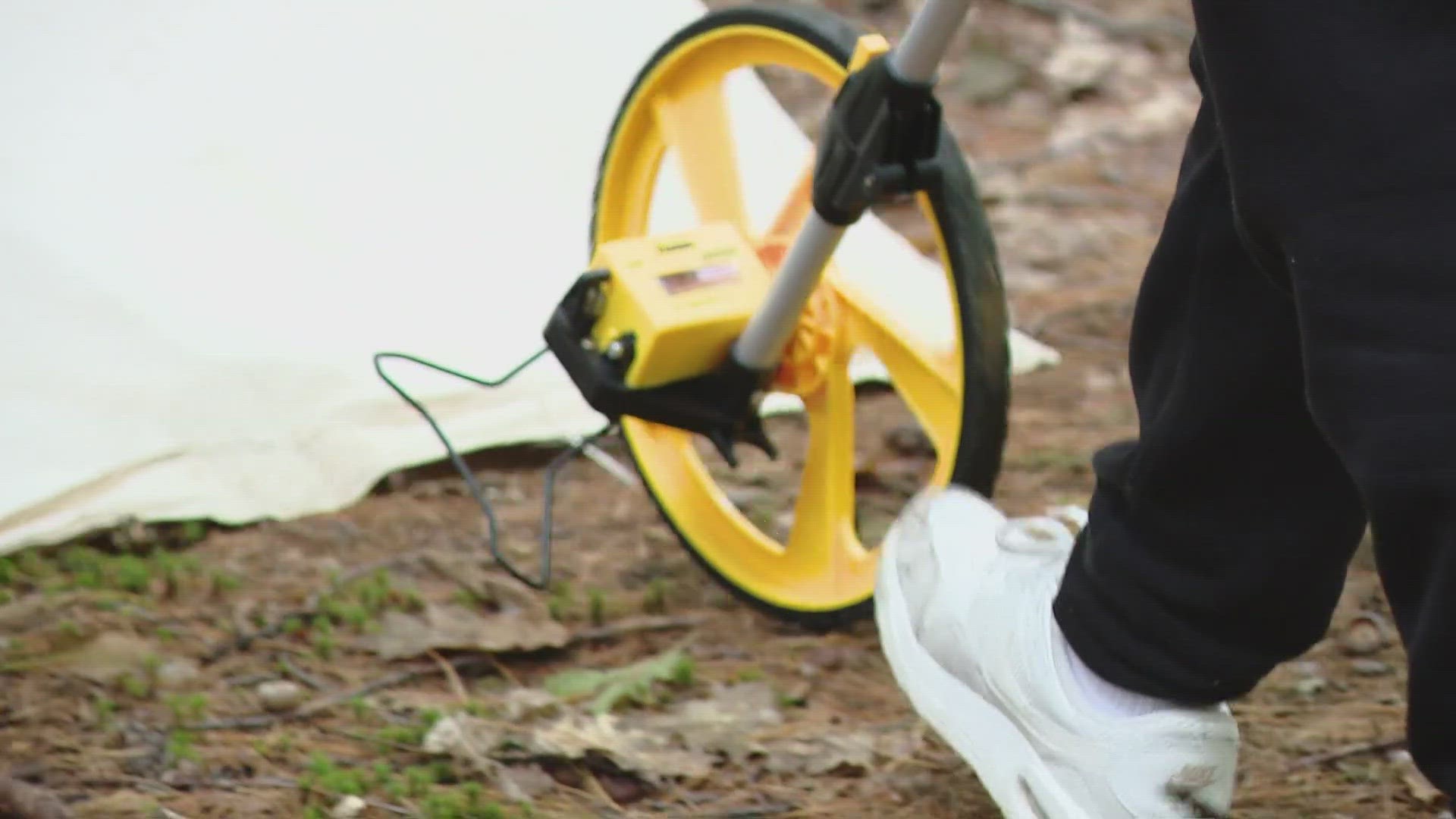GORHAM, Maine — Earlier this year, we told you about a free community science program where students inside and outside of the classroom learn about ticks' lifecycle, their habitats, the diseases they transmit, and how tick migration is linked to climate change. Now in its second year, the University of Maine 4-H -Tick Project has grown, involving over 1,500 students from Southern Maine to Aroostook County.
Seventh-grade science teacher Angela Gospodarek gave some last-minute instructions to her students before taking them across the street to a nearby hiking and biking trail to hunt for ticks.
"Look up, and how much sun do you see making it to the ground?" Gospodarek asked.
Students recorded the time of day and the current temperature while measuring the distance needed to drag for ticks, using large cloths. Ticks that attach to the fabric are then collected, identified, and preserved in small vials.
This is the second year Gospodarek's class is participating in the 4-H-Tick Project.
Twelve-year-old Amelia Winkler has learned how to identify a variety of ticks, including where and how they thrive.
"What time do they like to be out, what areas do they like to be in, and what different places you can find them?" Amelia explained.
Student Elliot Margeson said he does tick checks and wears protective clothing outdoors; and also knows what herbs can repel ticks.
"Lots of lavender spray. We also found out that mint keeps them away. They don't like the taste or the smell? No, it's too strong," Elliot said matter-of-factly.
Gospodarek said the knowledge is empowering for her students.
"One student said I told my neighbors if they find any ticks, they should take a picture and call me because I know what they are," Gospodarek explained proudly.
University of Maine 4-H-Tick Project
The free project provides supplies to collect ticks, safety information, activities, resources, and testing. NewsCenter Maine stories on ticks and tick-borne diseases as part of 'Tick Week' coverage are also included in the curriculum available to educators and volunteers.
Carla Scocchi, Umaine's Cooperative Extension 4-H youth development professional, runs the project. She and UMaine graduate students are piloting field tests that will be available next spring.
"We can collect the ticks in the drag and immediately test them instead of packaging them up, sending them to the lab, and waiting a couple of weeks for results," Scocchi said.
Over the past year, Gospodarek's students have collected 78 ticks. The majority were deer ticks. More than a dozen carried the bacteria that causes Lyme. After comparing data collected so far, later this fall students plan to produce PSAs to let the community know what kinds of ticks are in their backyards.

